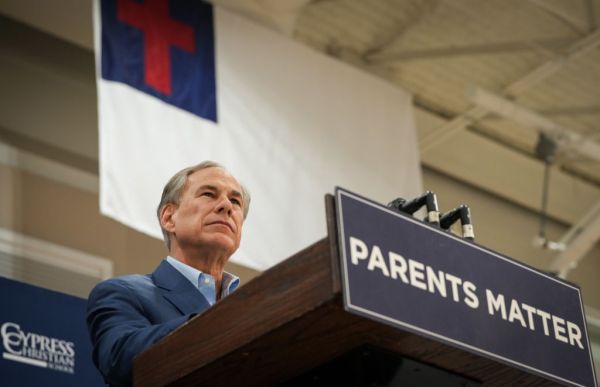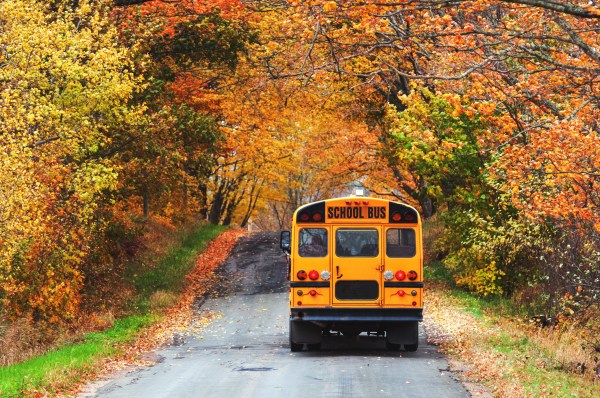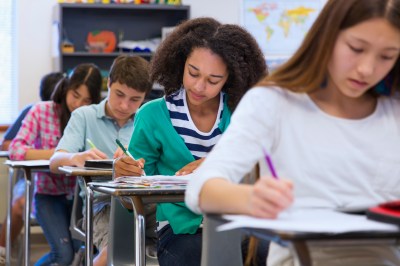The COVID pandemic and school shutdowns massively disrupted the public education system. Parents had to look at homeschooling, private schools, and other educational options, increasing the number of students leaving public schools in many areas across the country.
Today, between declining birth rates, fiscal chaos, and competition from charter and private schools, public education bears little resemblance to what it was before the pandemic. These challenges will deepen in the coming years, and widespread school closures and staff reductions are likely. But the most daunting task will be convincing parents to enroll their children in public schools.
The birth dearth.
Nationwide, public school enrollment has declined by 1.2 million students—about 2.3 percent—since 2020. Research suggests that 40 percent of these students switched to private schools or homeschooling as parents grew weary of prolonged school closures, masking policies, and curricular battles. But demographics also played a key role, with about one-quarter of it attributable to a declining number of school-aged kids thanks to the birth dearth.
The number of births in the U.S. dropped by 17 percent between 2007 and 2023. This means that 720,000 fewer births occurred in 2023 than in 2007. This baby bust also extends to U.S. immigrants. In 2019, immigrant fertility rates dropped below replacement levels for the first time.
Additionally, some states have experienced significant student attrition because of domestic migration between states. For instance, California and New York lost nearly 342,000 and 244,000 students, respectively, between fiscal years 2021 and 2022 due to outmigration, according to Bellwether.
The bad news for public schools, which largely rely on per-pupil funding is that the enrollment decline is far from over. With the lower number of school-aged kids as the driving factor, the National Center for Education Statistics (NCES) estimates that K-12 enrollment will drop by another 2.7 million students by the 2031-32 school year, with states such as California, New York, and New Mexico all projected to lose more than 10 percent of student enrollment. NCES projects that only nine states will see increases in public school populations, with Idaho, North Dakota, and Florida topping the list.
All told, declining enrollment will be a major blow to public school budgets across the country. School districts such as Los Angeles Unified School District (LAUSD), the nation’s second-largest, are already shells of their former selves. While it still serves about 530,000 students, LAUSD lost more than 100,000 students between the 2015-16 and 2022-23 school years, staying afloat financially thanks only to generous state and federal education funding policies. But for LAUSD and countless other school districts, the fiscal reckoning has arrived.
The fiscal storm.
In recent years, public school budgets have been shielded by the $190 billion in federal COVID relief funding received during the pandemic. But these funds are expiring, which researchers from Edunomics Lab estimate will result in an average single-year reduction of more than $1,000 per student in the 2024-25 school year. School districts that spent the one-time cash infusion on things like new hires, salary increases, or plugging budget holes will scramble to balance their books in the months and years ahead. The loss of federal funding coupled with fewer students are why school closures are on the horizon in places such as Seattle, San Francisco, and San Antonio.
“When it comes to K-12 education, American families have more options than ever. The rise of homeschooling and private school choice—combined with charter schools, open enrollment, and other forms of choice—means that public schools will increasingly have to compete for students and their funding.”
To make matters worse for public school budgets, inflation has wiped out recent state and local education funding increases. Between 2020 and 2022, nominal nonfederal funding grew by $1,485 per student, but that’s an increase of only $55 per student after adjusting for inflation. Before the pandemic, most public schools had grown accustomed to frequent funding bumps, with inflation-adjusted education revenue increasing nationally by an average of $3,212 per student from 2002 to 2020. But with many state budgets tightening, public school lobbyists will have an uphill battle to secure more funding despite their soaring costs.
There’s also another challenge lurking for public school budgets: universal school choice programs. Just four years ago, these programs seemed like a libertarian pipe dream. Now, in many states, they’re fundamentally changing public education and putting further strain on enrollment.
A competitive K-12 marketplace.
Before COVID, 65 school choice programs operated across 29 states, allowing students to access public dollars for private education. But virtually all of these policies were narrowly targeted, with eligibility limited to low-income students or students with disabilities. This changed in 2021 when West Virginia passed the first school choice law providing for near-universal participation. Since then, states like Arizona, Iowa, and Oklahoma have followed suit, bringing the number of states with universal or near-universal programs to 12.
According to EdChoice, 40 percent of all U.S. students are now eligible to participate in private school choice programs—that’s more than 22 million students and counting, with Texas and possibly other states likely to join the mix in 2025.
When it comes to K-12 education, American families have more options than ever. The rise of homeschooling and private school choice—combined with charter schools, open enrollment, and other forms of choice—means that public schools will increasingly have to compete for students and their funding.
Adapting to a new reality in K-12 public education.
School districts must right-size in the coming years, ensuring that costs align with funding. For many districts, closing underenrolled schools—a politically fraught process—will be an unavoidable part of the journey to fiscal sustainability. A study by the Brookings Institution found that between 2018-19 and 2021-22, 12 percent of elementary and 9 percent of middle schools saw enrollment declines exceeding 20 percent of their populations. As difficult as it is, school district officials should address this challenge head-on and dismiss vague or misguided calls for equity that delay the inevitable tough decisions and closures.
Public schools must also embrace a competitive K-12 marketplace, which research suggests they can do with effective leadership. In a recent study by David Figlio, Cassandra Hart, and Krzysztof Karbownik of Florida’s tax credit scholarship program, which gives students scholarships to attend private schools, researchers found that competition among schools helped improve public school performance over a 15-year period, including improvements in test scores, student absenteeism, and other measures.
A separate study by California’s Legislative Analyst’s Office (LAO) found school districts that lost students to the state’s District of Choice program, which allows students to transfer to public schools outside of their assigned school districts, took steps to mitigate these declines by engaging their communities and revamping their programmatic offerings. For example, community meetings revealed that families wanted more college preparatory or math and science courses. Additionally, families wanted increased transfer opportunities to other schools inside the school districts. The LAO reported that “districts made the implementation of changes to address [their community’s] concerns a priority” and, in some cases, were able to significantly reduce the number of students transferring out afterwards.Between extended school closures and controversial policy decisions, many families felt betrayed by public schools in recent years.
In the post-COVID era, public schools must examine their shortcomings and find ways to serve families better, especially as there are fewer students and the education marketplace becomes more competitive. This will become increasingly important as states adopt policies that give families more options.





Please note that we at The Dispatch hold ourselves, our work, and our commenters to a higher standard than other places on the internet. We welcome comments that foster genuine debate or discussion—including comments critical of us or our work—but responses that include ad hominem attacks on fellow Dispatch members or are intended to stoke fear and anger may be moderated.
With your membership, you only have the ability to comment on The Morning Dispatch articles. Consider upgrading to join the conversation everywhere.